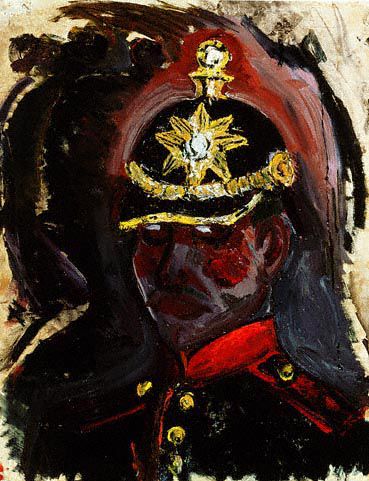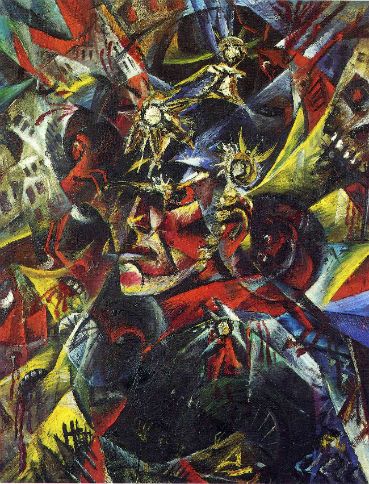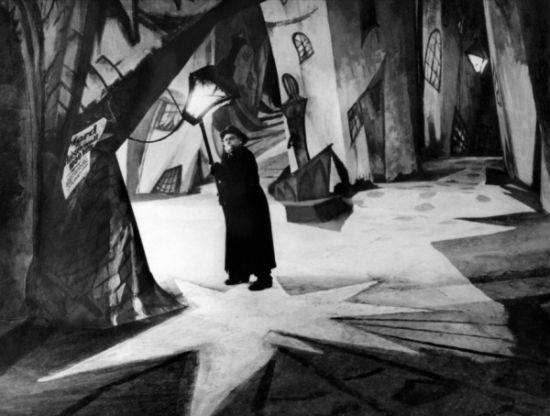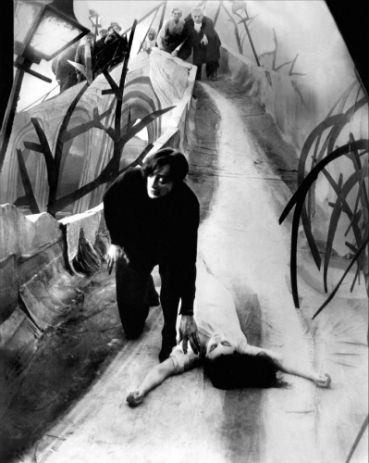By: Sage McLaughlin
Posted at What's Wrong With the World
The spiritual crisis engulfing the West entails not only revisionist academics’ skepticism concerning the Resurrection as an historical fact, or of the doctrine of the Trinity. So decadent and thoroughgoing is the skepticism of modern man that a willful embrace of ugliness, a worship of personal power for its own sake, and an unrestrained exaltation of the self are the most obvious features of our culture and our public life. A rejection of form as such is implicated here. There is a calamitous discordancy in all our public rituals. Our national anthem is seldom performed with reverence and beauty, being reduced to wild and extravagant displays of “range” on the part of the performer. The confused Novus Ordo Catholic liturgy celebrated in virtually every contemporary parish lurches from the sudden, crashing onset of noise, to awkward silence, is afflicted by incessant contradiction in the movement of the unconsecrated to and from the altar, and suffers from a near-complete absence of coherent form that is the necessary picture frame of ritual. Disorientation is our preferred orientation.
The last hundred years would seem to bear out Fr. Seraphim Rose’s contention in Nihilism: The Root of the Revolution of the Modern Age that Western man, having once received and accepted the truth of Christian revelation, could not but descend into nihilism and madness if ever he rejected it. I will not bother trying to defend that proposition, though of course there are many people who would dismiss it or find it offensive. Still, what in economics has been referred to as a hermeneutics of “revealed preferences” might be worth something here; that is, the truth about people can be discerned not by asking them what they think about a subject, as in a public opinion poll, but by watching what they say and do under relevant conditions. And we can say that the disintegration of the Christian consensus, the embrace of a thousand heresies that put man and his politics in place of God and His divine Law, and the rejection of the “Old Order” of the European monarchies ultimately manifested itself in the mechanization of mass murder known as the First World War. Thus when the German Expressionist painter Otto Dix (1891-1969) went to fight in the trenches on behalf of the Kaiser, he said that he carried with him two texts: the Holy Bible, and Frederich Nietzsche’s Also sprach Zarathustra.
The Great War was, in one sense, the end of the world. Dix’s often grotesque, desolating works in the years during and after that war (which I do not recommend beyond their interest as objects of analysis) do not so much portray the visible destruction of the European cities, which were left largely unmolested by the shells; indeed, one could have toured Munich, Paris, London, Budapest, or Prague in those days without detecting that there even was a war. Instead, the images Dix crafted are of a world shattered, and it is striking to me just how closely the artistic style of the period resembles nothing so much in aspect as a broken mirror, a lugubrious expression of angst by a civilization that no longer knew what it was, but was haunted by the terrible knowledge that all things were now twisted and misshapen. His self-portraits vividly show us the transmogrification of the Western man, beginning with the scowling 21-year-old Dix’s Self-Portrait with Carnation (1912):
 |
By the end of his first few months during the “Phony War” of late 1914, we see the piercing, knowing eyes recede into anxious blots of doubt, lurking beneath the prominent golden sun of the gunner’s insignia, the bright baubles of state obscuring the increasingly faceless and uncertain man:
 |
By the time of Self-portrait as Mars (1915), the human being is annihilated, having been reduced to the raw material of the apocalypse, a metallic figure with a wheel in place of his heart, the self now scattered as shards in a maelstrom:
 |
The Western art world, influenced by cubism and led by Expressionists like Dix, was belching forth an endless stream of content that was evocative of cataclysm, of a world broken and devoid of beauty. This visual style, replicated in thousands of similar images from the interwar period, was perhaps most famously delivered to a mass audience by the classic Robert Wiene film, The Cabinet of Dr. Caligari.
 |
Scene from The Cabinet of Dr. Caligari, 1920
It is a remarkable point that The Cabinet of Dr. Caligari is sometimes credited with introducing the concept of the “twist” ending in cinema, and that the particular twist envisaged here is the now-shopworn script in which the main characters are revealed to be the inhabitants of an insane asylum, the entire story a homicidal delusion. Such was the logic of the cosmic cul-de-sac of post-Kantian modernism, which promised a morality that was both universal and a product of the human mind.
 |
Scene from The Cabinet of Dr. Caligari, 1920
All of this was brought into focus for me by a piece of architecture that was not, surprisingly, the work of a corrupt American Cardinal of the Catholic Church. Nor was it the work of Daniel Libeskind, whose original concept for the post-9/11 reconstitution of Ground Zero was an adolescent expression of avante garde contempt for ordinary standards of beauty and form (his colleague Jeffery Kipnis probably said more than he intended about the contemporary art world when he remarked of Libeskind, “There’s only one Daniel in the world of architecture. I’m glad there’s Daniel, and I’m glad there’s no other.”) No, I am myself a modern man, so of course what actually got me thinking about this particular continuity in our art and architecture was the new football stadium for the Atlanta Falcons. Though long an enthusiast of organized sports, I just cannot imagine what would attract a person whose only knowledge of the subject was this artist’s rendering to take part in anything that happened in that building.
The incessant braying of our loud, vain, ugly public rituals signifies terminal decay. Now having been inured to it, there is next to no offense against beauty and dignified public order that will not find its defenders, all the more if it is packaged as entertainment. Spectacles of apocalyptic violence and destruction are more popular than ever. They are no longer even expressions of introspective horror, but of positive delight at the cleansing of a world devoid of meaning and coherence, and a return to something simpler--the void. Incredibly, this was the “promise” of the First World War which, many people do not realize, was in its beginnings very popular and a cause of exhilaration and even optimism across Europe.
It occurs to me that what all this imagery prefigures for the human race is indeed a cleansing fire, but not one of our own making. In contrast to that unhappy thought, in my next post I will take a glimpse back at the beauty and the order that still was, even amid so much turmoil and confusion, and still might be, if only in our own little gardens. But now, to bed.
-------------------------------------------------------------------------------------------------------------------------------------------------------------
Posted By: Kidist P. Asrat
-------------------------------------------------------------------------------------------------------------------------------------------------------------
